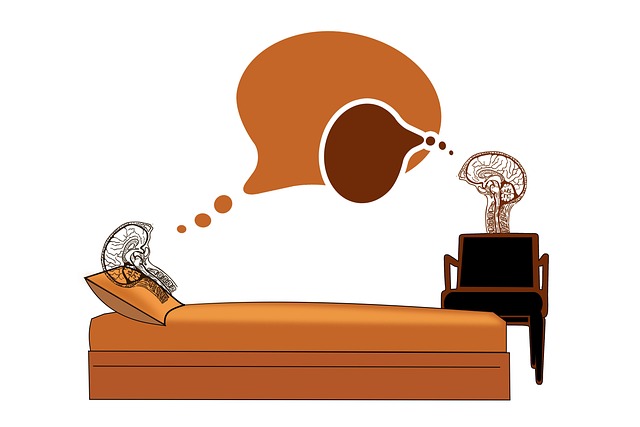Cold plunge therapy, involving immersing oneself in cold water after exercise, offers multiple benefits for athletes. It reduces muscle soreness and inflammation, strengthens the body's response to pain and inflammation, enhances recovery, expedites lactic acid clearance, improves endurance, and prevents injuries. Regular post-workout cold water immersion through techniques like ice baths can significantly aid athletic recovery, performance, and injury prevention.
“Unleash your body’s potential with Cold Plunge Therapy—a game-changer in athletic recovery. This powerful tool has taken the sports world by storm, offering a natural and effective way to enhance muscle recovery and prevent injuries. From elite athletes to weekend warriors, regular cold plunges provide a multitude of benefits, including reduced inflammation and delayed onset muscle soreness. Dive into this comprehensive guide to explore how integrating cold therapy into your post-workout routine can revolutionize your athletic performance and keep you in the game.”
Understanding Cold Plunge Therapy: A Powerful Tool for Athletes
Cold plunge therapy has emerged as a powerful tool in the arsenal of athletes looking to enhance their recovery and performance. This practice involves submerging oneself in cold water, typically an ice bath, for a short period after intense physical activity. The benefits are multifaceted; it aids in reducing muscle soreness and inflammation, key factors in athletic recovery. By stimulating blood flow to the extremities, cold water therapy helps flush out metabolic waste products that can cause discomfort and slow down muscle repair.
For athletes, integrating post-workout cold water immersion into their routine could be a game-changer. The therapeutic effect of cold plunges extends beyond muscle recovery; it also plays a significant role in preventing injuries. Regular exposure to cold therapy can strengthen the body’s natural response to pain and inflammation, potentially reducing the risk of future muscular and joint issues. Thus, athletes interested in optimising their performance and minimising downtime should consider incorporating this simple yet effective technique into their post-workout rituals.
The Science Behind Cold Water's Impact on Muscle Recovery
The science behind cold water’s impact on muscle recovery is fascinating. Cold plunge therapy, such as immersing yourself in an ice bath post-workout, triggers a cascade of physiological responses that support athletic recovery and injury prevention. When muscles are exposed to cold water, blood vessels constrict, reducing inflammation and minimizing damage caused by intense exercise. This rapid cooling effect also helps to slow down the breakdown of muscle tissue, allowing for quicker repair and growth.
Additionally, cold water therapy stimulates the release of endorphins, natural painkillers that can alleviate post-workout soreness. It promotes a state of relaxation, enhancing sleep quality, which is crucial for optimal muscle recovery. Studies have shown that regular cold plunges can improve athletic performance by accelerating lactic acid clearance from the body and enhancing overall endurance. By incorporating this simple yet powerful technique into their routines, athletes can experience faster recovery times, reduced muscle soreness, and improved performance in their respective sports.
Benefits of Regular Cold Plunges for Injury Prevention
Regular cold plunges offer numerous benefits for athletes looking to prevent injuries and enhance their overall athletic performance. By immersing oneself in cold water after a workout or intense training session, athletes can significantly reduce muscle soreness and inflammation. This process, often referred to as post-workout cold water immersion, accelerates the body’s natural recovery process by constricting blood vessels, which then dilates them, promoting improved circulation and nutrient delivery to fatigued muscles.
One of the key advantages of cold plunge therapy for athletes is its ability to mitigate delayed onset muscle soreness (DOMS). DOMS is a common issue faced by athletes, causing discomfort and hindering performance. Regular exposure to cold water helps flush out metabolic waste products that contribute to muscle pain, leading to faster recovery times and improved athletic readiness. Moreover, the therapeutic effects of cold therapy can improve joint mobility, reduce chronic pain, and enhance overall flexibility, all of which are essential for injury prevention in athletes.
Integrating Cold Therapy into Your Post-Workout Routine
Integrating cold therapy into your post-workout routine can significantly enhance athletic recovery. A cold plunge, often in the form of an ice bath or cold water immersion, is a game-changer for athletes looking to reduce muscle soreness and inflammation. By immersing yourself in cold water immediately after intense exercise, you trigger a series of beneficial responses in your body. This practice improves blood flow, which helps flush out metabolic waste products that accumulate during strenuous activities. As a result, you experience faster recovery times and reduced muscle stiffness.
Cold water therapy for athletes also has profound effects on athletic performance. The shock of cold temperature can stimulate nerve endings, leading to improved circulation and oxygen delivery to tired muscles. This increased blood flow accelerates the repair process, ensuring your muscles are ready for the next training session. Moreover, regular cold plunges can help prevent injuries by strengthening connective tissues and improving overall joint health, making them an excellent addition to any athlete’s injury prevention strategy.
Regular cold plunge therapy offers a powerful, natural way to enhance athletic recovery, reduce inflammation, and prevent injuries. By integrating this simple yet effective practice into your post-workout routine, you can experience the benefits of cold water immersion, from accelerated muscle repair to improved athletic performance. Embrace the science behind cold therapy and take a dive into a healthier, more resilient future.
